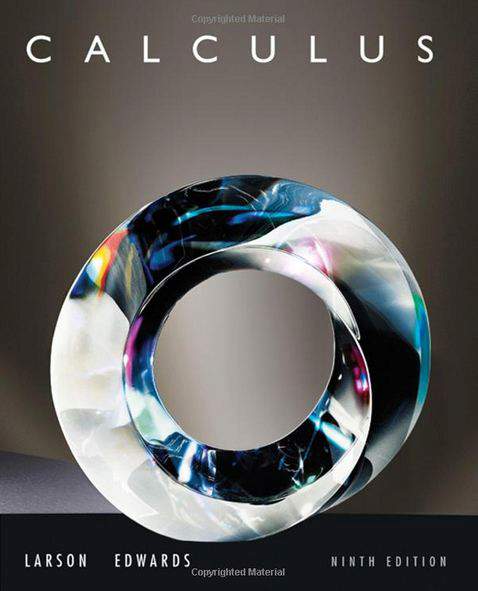Connecting...

This is a quick preview of the lesson. For full access, please Log In or Sign up.
For more information, please see full course syllabus of College Calculus: Level II
For more information, please see full course syllabus of College Calculus: Level II
College Calculus: Level II Integration by Parts
Lecture Description
In this lecture we are going to talk about Integration by Parts. First, we will introduce the main equation for integration by parts. We are going to see where it come from. The point of integration by parts is that we will be given a hard integral to solve. What we are going to do, is take the given integral and split it up into two parts, a U part and a dV part. Then we will invoke this formula to convert it into UV minus the integral of VdU, and if we do that right, then the second integral that we get will be an easier integral. We can finish the problem by doing that easier integral.
Bookmark & Share
Embed
Share this knowledge with your friends!
Copy & Paste this embed code into your website’s HTML
Please ensure that your website editor is in text mode when you paste the code.(In Wordpress, the mode button is on the top right corner.)
×
- - Allow users to view the embedded video in full-size.
Next Lecture
Previous Lecture










































 Answer Engine
Answer Engine






1 answer
Fri Oct 7, 2016 9:56 AM
Post by selam berhe on October 5, 2016
Antibiotic pharmacokinetics An antibiotic tablet is taken and t hours later the concentration in the bloodstream
is C(t)= 3(e^-0.8t -e^-1.2t)
where C is measured in mgymL.
(a) What is the maximum concentration of the antibiotic
and when does it occur?
(b) Calculate integral of 0 to 2 C(t) dt and interpret your result.
(c) Calculate integral of 0 to infinity of C(t) and explain its meaning.
`
0 Cstd dt and explain its meaning.
3 answers
Mon Jun 8, 2015 5:08 PM
Post by Joshua Bowen on May 11, 2015
How do we recognize a Intergration by part quickly?
1 answer
Mon Aug 18, 2014 11:04 AM
Post by ahmed ahmed on August 16, 2014
Thank you from the bottom of my heart ... you are of a great help and i got A on my calculus-2 summer class... i am so happy... thank you again and again and forever...
1 answer
Tue Feb 11, 2014 4:16 PM
Post by Silvia Gonzalez on February 3, 2014
Hi, thank you for taking the time to prepare such good lectures.
I am doing the practice exercise integral from 0 to n of (x-1)sinx.dx and I do not understand how you go from step 8 to 9, can you help me?
1 answer
Sun Nov 3, 2013 6:23 PM
Post by Christian Fischer on November 3, 2013
Hi Professor, Thank you for a great video. There is one thing I don't understand: If u=x then du=dx but if u=x^2 then du=2x
To me it looks like we differentiated x^2 to get du=2x but did nothing to x to get du=dx? if we had differentiated x we would get du=d*1 What is the explanation for that?
Have a great day
Christian
2 answers
Fri Aug 23, 2013 11:48 AM
Post by Maximillian Lanander on August 17, 2013
I think you made a boo boo. Not sure. If u is x^2 then du surely = x^2dx ?
3 answers
Fri Mar 11, 2016 9:41 AM
Post by Ramez Hajelsawi on July 7, 2013
That shortcut blew my mind, I went back and redid all the problems that it works for again just to prove it to myself. Fantastic lecture!
1 answer
Tue Apr 23, 2013 7:49 PM
Post by Hye Goo Yoon on April 23, 2013
integration of [(3X^2)/7^3]e^-(x/7)^3 dx 0<X<∞
At first I have used by parts method but it was a never ending integration.
I have found a formula from the table of integrals, it still gave me unfinished integral. How can I effectively solve this kind of integration by parts? Is there any ways for me to easily approach this kind of integration? Since the range is given,
Somehow I have ended up learning about Gamma function. I am very confused now.
Thank you
1 answer
Fri Jan 18, 2013 5:30 PM
Post by Abdelrahman Megahed on January 17, 2013
How come LIATE doesn't work for example 3?
1 answer
Fri Jan 18, 2013 5:30 PM
Post by Shehan Gunasekara on May 16, 2012
WOW!! This is so goood!! you are better than my lecturer
1 answer
Fri Jan 18, 2013 5:33 PM
Post by Emudiare Sowho on May 7, 2012
How do we get the practice problems?
1 answer
Fri Jan 18, 2013 5:34 PM
Post by Kathy Hodge on November 7, 2011
Thanks. Helped me understand and apply this independently, without having to look at aids, for the first time, despite some previous attempts.
3 answers
Fri Jan 18, 2013 5:36 PM
Post by Maimouna Louche on June 7, 2011
Why does it stop and start over? It stops at the "Shortcut: Tabular Integration".
3 answers
Fri Jan 18, 2013 5:37 PM
Post by Maimouna Louche on June 7, 2011
what is the difference between derivatives and integrals?
1 answer
Fri Jan 18, 2013 5:38 PM
Post by Anthony Simon on April 20, 2010
This is a great video, i can't wait for those practice problems.
1 answer
Fri Jan 18, 2013 5:41 PM
Post by Stephan Maric on March 13, 2010
Excellent video instruction.
My only question is whether or not you have access to supplemental problems. This would really help me practice out the problems.